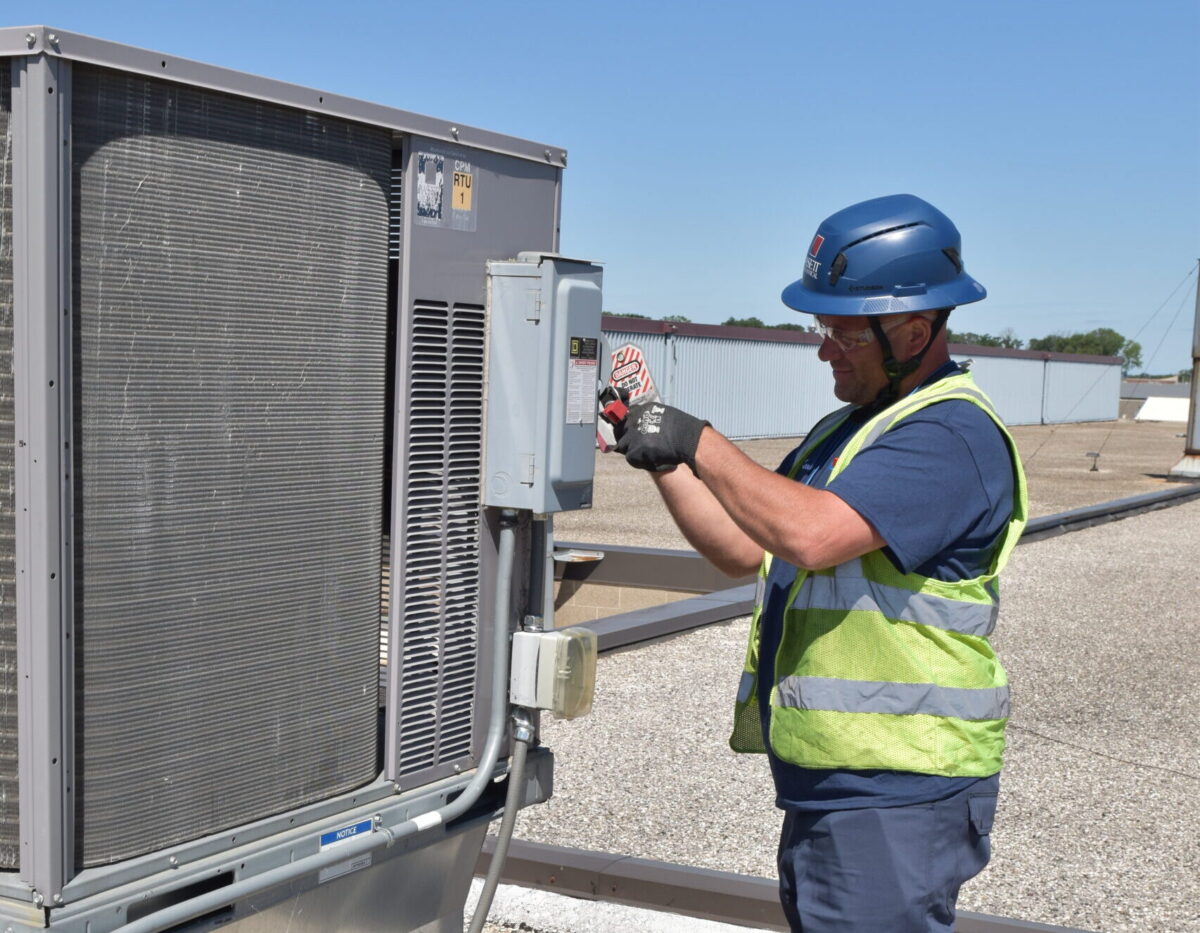
Bassett Mechanical is pleased to offer this educational series to share industry updates and best practices for your facility operations in response to the recent COVID-19 pandemic.
We are committed to keeping you, an important member of our Bassett Mechanical Family, safe and are here to assist you in making informed and proactive decisions related to the quality and safety of your facility.
This series will explain how contaminants may impact your facility and your facility’s mechanical systems, potential strategies and risks to consider, and ways you can respond to help keep your people and products clean and safe.
During the past few months, we have become keenly aware of the role sanitization plays in providing a safe and clean work environment. COVID-19 has reinforced many of the basic sanitization guidelines like proper handwashing and has drawn attention to more complex ways to intervene as discussed in our previous article related to indoor air quality.
WHAT’S IN THE AIR?
The World Health Organization (WHO) indicates that “The COVID-19 virus spreads primarily through droplets” primarily from human emission (coughing, sneezing, talking). These droplets and aerosols, which can harbor a variety of viruses, can be carried by humans to other secondary surfaces or carried through the air and land on surfaces further from the original source. This means that in many cases, sanitization may be an opportunity to minimize the risk of spread. In part two of this series, we will discuss strategies like ultraviolet lighting, ionization technology, and other measures that can work in conjunction with a well-maintained HVAC system to support a clean environment.
POTENTIAL MITIGATION STRATEGIES FOR SANITIZATION
These mitigation strategies are not applicable or suitable for every facility or mechanical system. Before implementing any changes it is important to contact your trusted and knowledgeable HVAC provider for guidance in evaluating which strategies may prove most successful for your facility’s specific needs.
Consider ultraviolet lighting. ASHRAE explains that “ultraviolet energy inactivates viral, bacterial, and fungal organisms so they are unable to replicate and potentially cause disease. The entire UV spectrum is capable of inactivating microorganisms, but UV-C energy (wavelengths of 100-280nm) provides the most germicidal effect, with 265nm being the optimum wavelength.” Ultraviolet light damages the DNA of a pathogen’s cell by causing mutations prohibiting its ability to reproduce. As a result, it has the potential to be a practical and cost-effective method of inactivating airborne viruses. ASHRAE states that depending on the UV-C intensity, exposure, and placement, the UV-C wavelength can kill 90% or more of all microorganisms living on HVAC air ducts and evaporator coils. Because of its effectiveness in combination with other HVAC health and maintenance procedures, Germicidal UV lighting is an increasingly popular way to reduce pathogens.
Learn more about ionization technology. This patented technology uses an electric charge to create a plasma field filled with a high concentration of positive and negative ions. As these ions travel with the airstream they attach to particles, pathogens, and gas molecules. The ions help to collect fine sub-micron particles, making them filterable. The ions also kill pathogens by robbing them of life-sustaining hydrogen. The ions breakdown harmful volatile organic compounds (compounds that easily become vapors or gases) with an electron volt potential under twelve (eV<12) into harmless compounds like O2, CO2, N2, and H2O. The ions travel within the air stream into occupied spaces, cleaning the air everywhere the ions travel, even in unseen spaces.
Evaluate sanitization measures. Organizations like ASHRAE gain insights from the EPA related to the use of chemicals and other disinfectants against viruses including COVID-19. The EPA produces what they call “List N”; a list of products that they expect to kill the COVID-19 virus based on their effectiveness against other viruses and other human coronaviruses similar to COVID-19. ASHRAE indicates that all surface disinfectants on List N can be used to kill viruses on surfaces such as counters and doorknobs. While the CDC recently changed its guidelines to indicate that transmission is less likely through person to surface contact for viruses like COVID-19, they still recommend regular cleaning and disinfecting of frequently touched surfaces as a protective measure.
During the sanitization process, it is important to remember to read the product labels and use each of the various disinfectants as they are directed. Some products require specific contact time in order to kill the virus, so it is important to use the products the way they were intended to ensure effectiveness.
Sanitize air-handling coils and air cabinets. Sanitizing these areas can help eliminate pathogens at the source. Nu-Calgon Bio-fresh or Nu-Calgon evap may be good choices for this exercise since both are no-rinse options and are EPA certified.
Consider touchless water faucets, urinals, and toilets. These help to minimize touch points and areas of potential contamination through person to surface contact.
Consider the installation of “elbow opening” or “toe-pull” door handles. Door handles that are made for touchless entry or foot-operated door handles can also help minimize the amount of frequently touched surfaces.
To learn more about these strategies to support the safety and effectiveness of your daily operations email us at info@bassettmechanical.com.




